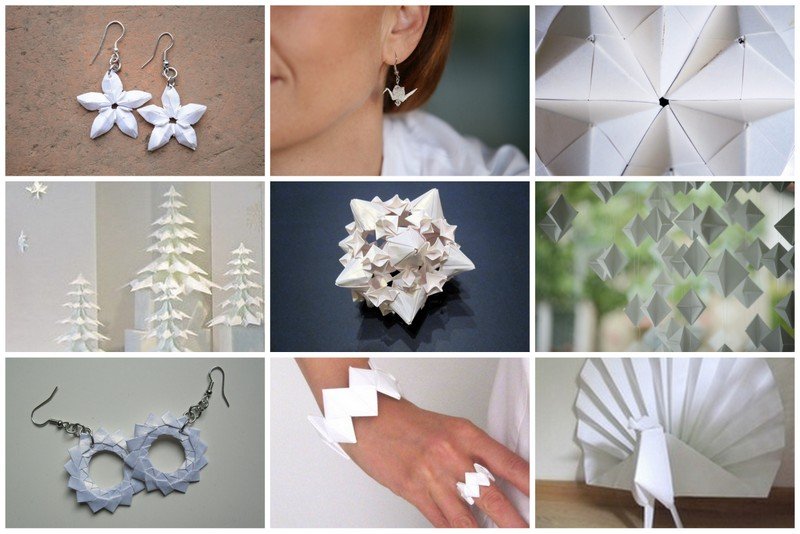
I love origami! I like to fold papers... it is my artistic endeavor. Those who follow me have noticed that from time to time I published a photo about origami I made. On the photo above you can see a selection of white origamis I made (you can find more of my origamis here).
I would like to share with you some basic general knowledge about origami. Let me start with the meaning of the word "origami". It literary means “folding paper”, since it is structured from the words 'oru' (meaning 'to fold' in Japanese) and 'kami' (meaning 'paper' in Japanese).
How it all started... a bit of history never hurt anybody
Origami has its roots in China in the first or second century AD from where it expanded to Japan, where it flourished. Spain was also one of the first countries where origami was present very early on. Later in expanded all over the world. I am avid origami folder from Slovenia.
Origami father
The father of origami is Akira Yoshizawa (March 14, 1911 - March 14, 2005). He was Japanese origami master and he is the one who develope origami from a craft into an art.
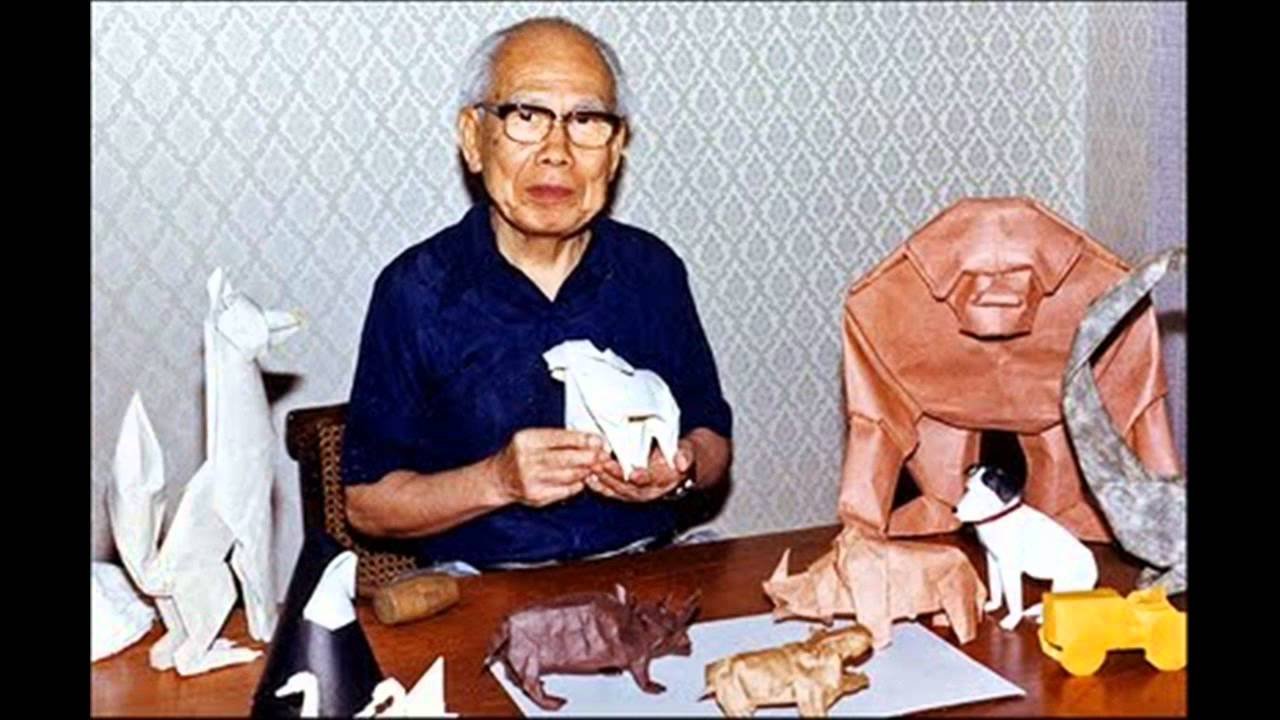
Akira Yoshizawa among his origami models Source
In 1954, he set up the Yoshizawa-Randlett system of drawing origami folds in his first monography (Atarashi Origami Geijutsu (New Origami Art) in 1954). He started to use the lines (dotted and dashed lines to represent mountain and valley folds), and a few other symbols (“inflate” and “round”). This system caught the attention of Samuel Randlett and Robert Harbin, who added a few symbols such as “rotate” and “zoom in”, and then adopted it as the standard. The Yoshizawa–Randlett systemwas first described in Samuel Randlett's Art of Origami in 1961. It is a system of symbols, arrows, and diagrams still used as the standard for all origami lovers today.
How did origami (also) get famous?
Probably most of you have heard about origami in connection with a story of Sadako Sasaki (佐々木 禎子 Sasaki , January 7, 1943 – October 25, 1955). This Japanese girl was 2 years old when the atomic bomb hit Hiroshima and who later got leukemia. In her wish to get better, she started folding cranes. She followed the belief that the wish of every person who folds 1000 cranes will come true. When she folded 644 cranes, her young life ended. But the story expanded all over the world and a monument was set up in her memory in Hiroshima. Even today, people send cranes to her address from all over the world.
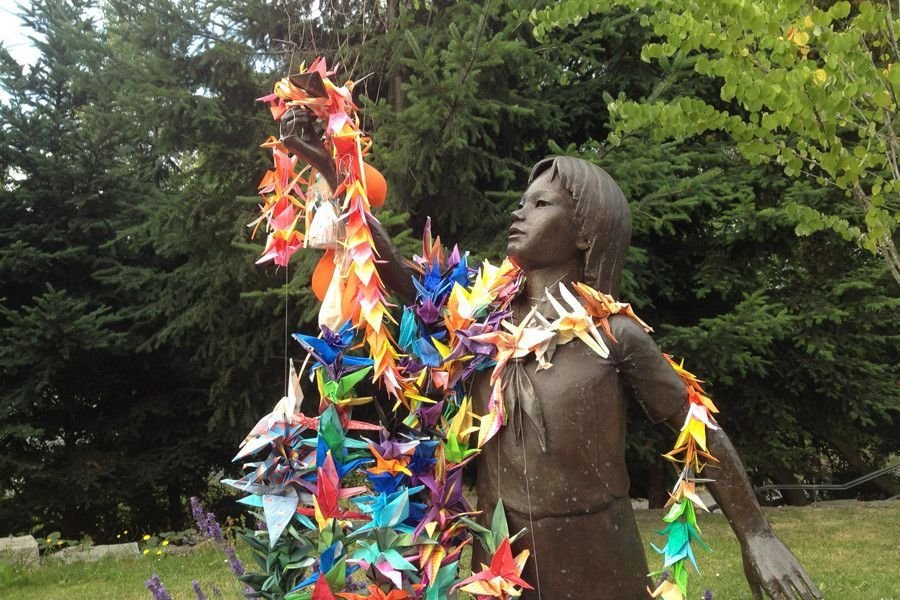
Picture of Sadako Sasaki monument / Source
So why is origami fine and fun?
Origami is a calm, focused activity which relaxes and engages at the same time. It's an interesting activity that improves concentration.
This art of folding paper is around for more than 1000 years, and still, we discover new dimensions in the art of origami.
Origami works on several levels:
- impacts activation of the left and right hemisphere of the brain
- increases creativity
- helps to develop fine motoric skills
- improves patience
- realization"what I can do by myself" has a good impact on self-esteem.
Due to the all above origami is a fine activity for adult and children and it is especially recommended and suitable for children who are otherwise difficult to calm down and difficult to follow the directions. The motivation to complete a model sustains their concentration for longer than other activities.
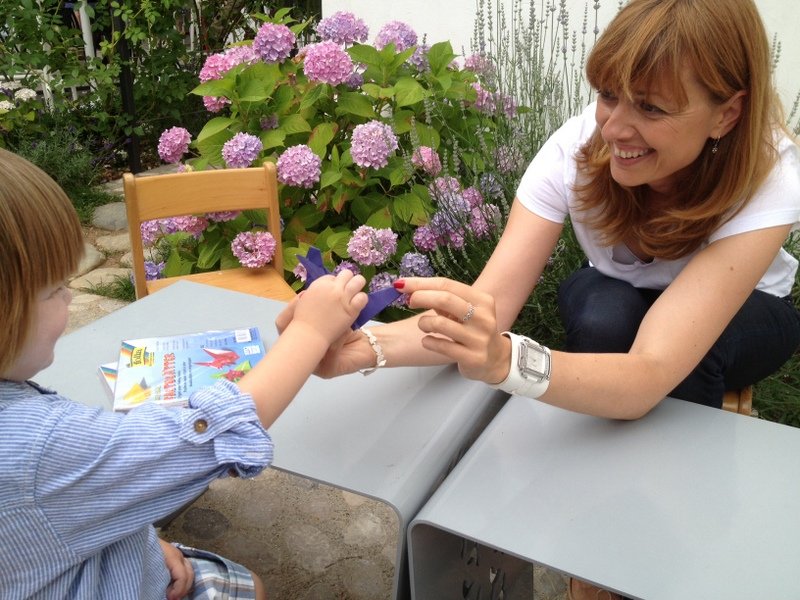
One of my little participants on my origami workshop / Source: personal archive
Origami is really beneficial for children's development, as it introduces a number of different mathematical features such as sequences, symmetry, parts of a whole, space, angles... Origami folding techniques can aid the understanding of mathematical concepts and promote a better spatial representation. Folding a 3-dimensional shape from a single sheet of paper can help us learn or re-learn different geometrical bodies. The best part is that all this learning is done "by the way" in the form of a game that relaxes and interests most kids!
More on direct and indirect benefits of origami
Neuroscientific research carried out by Dr. Katrin Shumakov and Dr. Yuri Shumakov confirms these beneficial effects of origami on the brain. Origami trains your memory and develops fine motoric.
The sequence of actions required for each origami model trains your memory and develops your fine motor skills.
When a child (or an adult, for that matter) attempts to memorize the sequence of folds for a particular model, they eventually advance at it and can successfully apply this skill to other, more complex, activities.
So precise following of set sequence of folds of paper is a key to a beautiful origami, but also to a well-trained memory!
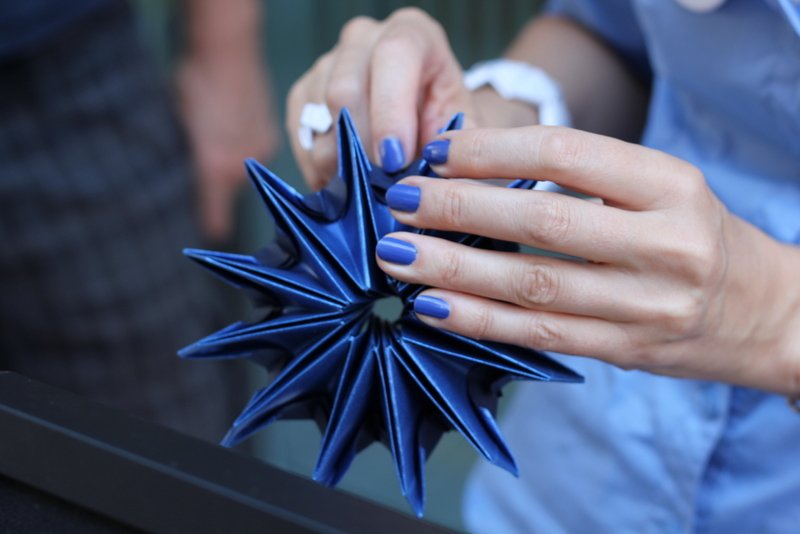
My hands folding a model called Origami Firework / Source: personal archive
In further blogs on origami, I will share with you about the diversity of origami. I will also teach how to fold a few basic origami models. And for more patient and ambitious origami folders, I will share some not so very basic models...
Stay tuned, since series of origami blogs will follow!

In few words... So to be short and sweet, my introduction in #-form would look like this:
I joined Steemit in December 2017. @blockchain48 introduced me to it and explained to me how it works and why I could enjoy it. And I do enjoy it! I like the diversity and spirit of Steemit!
My main topic here is running. But I also blog about productivity (GTD - Getting Things Done), origami and from time to time also other topics and areas of interest.
#streakrunningday670 #runner #mother #girlfriend #friend #daughter #sister #vegan #steemian #origamicreator #origami #gtdmastertrainer #gtd #gettingdailyrunsdone #bizinsakiden #findyourstrong #runningproject #runforsteem #vsakodnevnitek #runeveryday #runstreak #streakrunner #veganrunners #runningonplants #plantpowered #plantstrong #veganstrong #compassionarhlete #minimalism #catlover #sealover #coffeelover #sincereconversationfan
I do appreciate your comments with added value, upvotes, and resteems!

http://www.arsorigami.com
http://www.facebook.com/ArsOrigami
http://www.pinterest.com/NatasaBrunec/ars-origami/
